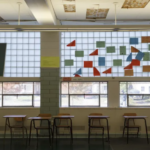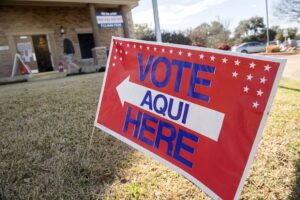Much about the coming school year remains uncertain, including how many New York City teachers will feel comfortable returning to their classrooms: Up to 20% could teach from home over concerns of being at higher risk for severe complications from the coronavirus, education department officials told principals last week.
That could mean up to 15,000 city teachers will work from home, a number that represents more teachers than Houston’s entire public school system. It could have a significant impact on what classrooms for the city’s 1.1 million students will look like.
As the city offered more details about fall planning last week, education department officials mentioned the estimate during an informational call with school leaders about possible reopening scenarios as well as other logistical details to consider for the fall, according to principals familiar with the call.
That figure was a rough estimate based on state and federal guidance of who is considered high risk, including age of educators and health conditions that teaching staff have self-reported, according to an education department spokesperson. The department presented the figure to help schools figure out various contingency plans as leaders consider their options for the fall.
The coronavirus can cause mild to severe illness, sometimes creating no symptoms at all. Some people are at higher risk for severe complications, including people who are older than 65 or have pre-existing conditions, such as cancer, chronic lung disease, heart disease, and being immunocompromised, according to the Centers for Disease Control.
“The [education department] has committed to offering accommodations to staff members with high-risk medical conditions in accordance with CDC guidelines,” teachers union president Michael Mulgrew wrote to his members last week.
An education department spokesperson said on Monday the department was still figuring out specific accommodations.
It’s likely very complicated to determine the actual number of teachers who are at high risk. Besides age, principals may not know the various health conditions of their employees or if they will want to stay home.
‘Nothing Is Definitive’
Mark Cannizzaro, president of the union that represents principals and other administrators, said it’s too early to actually know how many teachers will need special accommodations. The need will vary from school to school — adding another wrinkle for planning reopenings in the fall.
“If 20% of staff are out, that means that either we’re gonna need substitutes in the building to make up that or we’re gonna have to further reduce the number of students that can attend at any time,” Cannizzaro said.
The education department has emphasized that there is no set plan for how schools will reopen next fall but it is considering a variety of options, including split schedules and a hybrid model of in-person and virtual learning.
“Right now, we are in the planning phase for what school will look like next year, and nothing is definitive,” Miranda Barbot, a spokesperson for the education department, said in a statement. “The goal is to provide as much in-person learning as possible, and our job is to be prepared by sharing the information we have now with principals to help them plan for a range of possibilities.”
In his letter to his members last week, Mulgrew said the union was gravitating toward a hybrid model and that it was working with the education department to accommodate school workers who are considered high risk.
“How to staff this new hybrid model is one of the challenges ahead of us. Will certain educators be fully remote and others always on-site, or will most staff follow a hybrid model like their students?” Mulgrew wrote.
Mayor Bill de Blasio also noted that families might not feel comfortable with sending their children back to school.
“I think there’s going to take time for parents in some cases to feel comfortable,” de Blasio said last week. “Some parents won’t be ready. And so, we’re going to have to have a remote element for anyone who’s not yet ready to send their child back.”
Liat Olenick, a science teacher at a Brooklyn elementary school, takes immunosuppressant medication for a liver transplant she received in college. In March, her doctor advised her to stay out of school buildings before officials decided to close the district.
“It does remain a concern for me, and I know as a chapter leader there are other people in my school who have the same concern, who are vulnerable,” said Olenick, who is active with MORE, a social justice caucus of the teachers union that has been critical of the UFT’s response during the coronavirus. “I think the concern is about being in the school building but also getting to school.”
Olenick also worries about teachers who may not be considered high risk and may not qualify for special accommodations but live with family members who have pre-existing conditions.
“Right now I don’t know what it means to be accommodated for health issues, and there needs to be more clarity,” Olenick said. “We can’t find out that on Aug. 30 that ‘accommodated’ means, ‘Here’s an extra bottle of hand sanitizer. Good luck.’”
The article was published at 20% of NYC Teachers Might Work From Home Because of Health Concerns, According to Education Department Estimates.











More Stories
More West Virginia schools will participate in opioid abuse prevention program
Pennsylvania is increasingly underfunding special education, report finds
Memphis’ Kingsbury High School community steps up call for changes